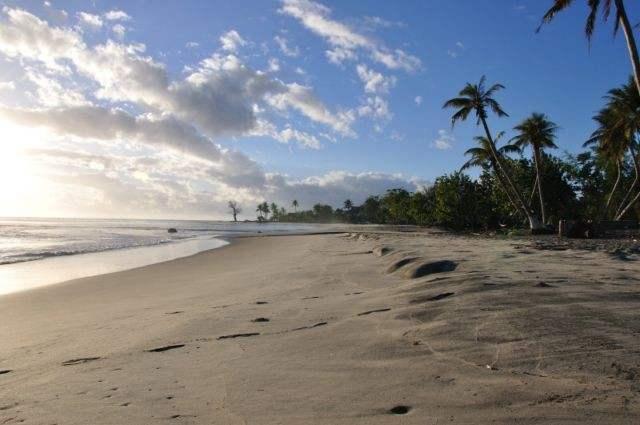The east

This side is remarkable for the presence of many harbours the biggest is the Toamasina port operating for international and domestic lines, the others small port are operating exclusively for domestic lines, and the “Canal of Pangalanes” which is an artificial canal, of about 600 km, connected lakes with and running parallel to the east coastline.
Though the rainy and dry seasons are common to the whole island of Madagascar, however this part has the highest rainfall all over the year, even during the said dry season the wind stream Allizé from the southeast brings much dampness either rains or drizzles. This part of the island is also remarkable for its primary rain forest and lush vegetation.
Its population is about 2,855,600 persons, composed by three ethnic groups: North-Betsimisaraka, Tsimihety, South-Betsimisaraka, Antambahoaka, Antaimoro, Antaifasy, Zafisoro, Antaisaka. The largest ethnic group is the Betsimisaraka on the east part. One of them has its extension from the Northwest centre parts of Madagascar, Tsimihety. Women also have their own way of plaiting their hairs and dressing their Lamba. Indigenous men's clothes are made with vegetal natural fibres which are a bit waterproof.
The economy of this region is mainly based on forest exploitation and agriculture of fruits and aromatic plants such vanilla, cloves... Besides, the tourism industry begins to exploit the existing natural resources and touristic sites by expanding the infrastructures of reception of various types of visitors.
Due to its green characteristic, the ecotourism is more dominant than others touristic attractions and also the sea of the Indian Ocean is always in enough strong agitation, waves are a bit big for those who are only coming for swimming.
The Ivoloina zoological and botanical park is the famous example of the ecotourism. The park is located in the centre of a forestry station of 282 hectares distant of 12 km in the north of Toamasina. This is the natural habitat for many endemic fauna and flora. Visitors can enjoy the view of some nocturnal lemurs such as the “Aye Aye”, the “Cheirogale” and the “Microcebe”. In total the forest shelter about 12 species of endemic lemurs and many tortoises and reptiles. It is an ideal place for naturalists. The park also runs a breeding camp for the extremely endangered animals such as the “Prolemur simus” or lemur of Bamboo. In addition to the primary forest, hikers can also admire introduced fruit trees, pay a visit at the environmental education centre representing the model of an agro-forestry station, and from the peak of the Ivoloina hill admire the fantastic view of the surrondings.